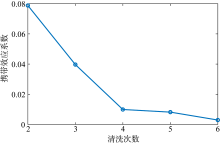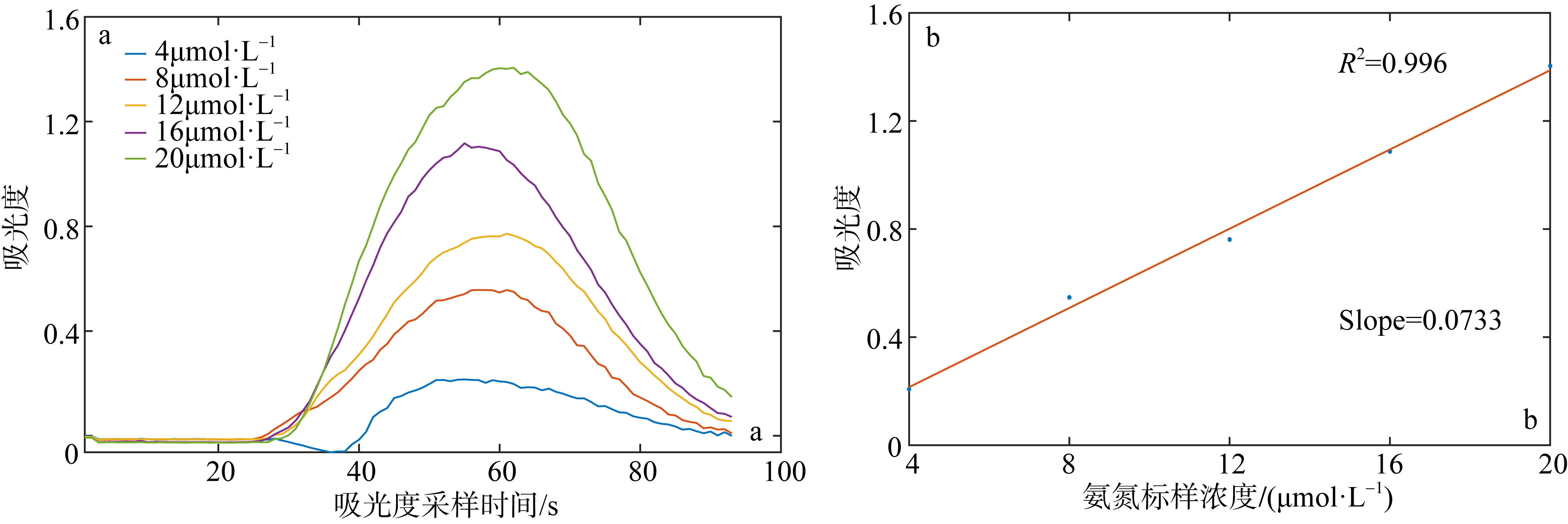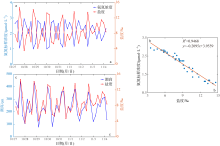| [1] |
何露露, 杨平, 谭立山, 等, 2019. 福州地区海湾和河口潮汐沼泽湿地秋季上覆水营养盐分布特征[J]. 环境科学, 40(4): 1788-1796.
|
|
HE LULU, YANG PING, TAN LISHAN, et al, 2019. Nutrient distribution of overlying water in tidal marshes in five estuaries and bays of the Fuzhou region in autumn[J]. Environmental Science, 40(4): 1788-1796 (in Chinese with English abstract).
|
| [2] |
施玉珍, 赵利容, 柯盛, 等, 2013. 湛江湾海域营养盐的时空分布特征及潜在性富营养化研究[C]//热带海洋科学学术研讨会暨第八届广东海洋湖沼学会、第七届广东海洋学会会员代表大会论文及摘要汇编. 北京: 中国学术期刊电子出版社, 395-401,
|
|
SHI YUZHEN, ZHAO LIRONG, KE SHENG, et al, 2013. Studies on distribution feature of nutrient and potential eutrophication in Zhan Jiang Bay sea area[C]// Symposium on tropical marine science and compilation of papers and abstracts of the eighth Guangdong oceanology society and the seventh Guangdong oceanography congress. Beijing: China Academic Journal Electronic Publishing House: 395-401 (in Chinese with English abstract).
|
| [3] |
石泳昊, 贾良文, 张恒, 等, 2021. 湛江湾内湾环境容量计算与排污治理[J]. 热带海洋学报, 40(4): 134-142.
doi: 10.11978/2020086
|
|
SHI YONGHAO, JIA LIANGWEN, ZHANG HENG, et al, 2021. Environmental capacity calculation and sewage treatment in Inner Zhanjiang Bay[J]. Journal of Tropical Oceanography, 40(4): 134-142 (in Chinese with English abstract).
doi: 10.11978/2020086
|
| [4] |
王丽芳, 黄韬, 杜川军, 等, 2021. 不同海水营养盐现场连续观测系统的比较研究[J]. 热带海洋学报, 40(3): 103-113.
doi: 10.11978/2020087
|
|
WANG LIFANG, HUANG TAO, DU CHUANJUN, et al, 2021. Comparison of different continuous in-situ observation systems in seawater[J]. Journal of Tropical Oceanography, 40(3): 103-113 (in Chinese with English abstract).
doi: 10.11978/2020087
|
| [5] |
中华人民共和国国家质量监督检验检疫总局,中国国家标准化管理委员会, 2007. GB 17378. 4-2007 海洋监测规范第4部分: 海水分析[S]. 北京: 中国标准出版社: 109-111.
|
|
GENERAL ADMINISTRATION OF QUALITY SUPERVISION,INSPECTION AND QUARANTINE OF THE PEOPLE’S REPUBLIC OF CHINA, STANDARDIZATION ADMINISTRATION OF THE PEOPLE’S REPUBLIC OF CHINA, 2007. GB 17378. 4-2007 The specification for marine monitoring—Part 4: Seawater analysis[S]. Beijing: Standards Press of China: 109-111 (in Chinese).
|
| [6] |
ADORNATO L R, KALTENBACHER E A, GREENHOW D R, et al, 2007. High-resolution in situ analysis of nitrate and phosphate in the oligotrophic ocean[J]. Environmental Science & Technology, 41(11): 4045-4052.
|
| [7] |
BEROUNSKY V M, NIXON S W, 1993. Rates of nitrification along an estuarine gradient in Narragansett Bay[J]. Estuaries, 16(4): 718-730.
|
| [8] |
BRANDES J A, DEVOL A H, DEUTSCH C, 2007. New developments in the marine nitrogen cycle[J]. Chemical Reviews, 107(2): 577-589.
pmid: 17300141
|
| [9] |
CONLEY D J, PAERL H W, HOWARTH R W, et al, 2009. Controlling eutrophication: nitrogen and phosphorus[J]. Science, 323(5917): 1014-1015.
|
| [10] |
DESMIT X, THIEU V, BILLEN G, et al, 2018. Reducing marine eutrophication may require a paradigmatic change[J]. The Science of the Total Environment, 635: 1444-1466.
doi: S0048-9697(18)31360-3
pmid: 29710669
|
| [11] |
DONEY S C, 2010. The growing human footprint on coastal and open-ocean biogeochemistry[J]. Science, 328(5985): 1512-1516.
doi: 10.1126/science.1185198
pmid: 20558706
|
| [12] |
DUARTE C M, BORJA A, CARSTENSEN J, et al, 2015. Paradigms in the recovery of estuarine and coastal ecosystems[J]. Estuaries and Coasts, 38(4): 1202-1212.
|
| [13] |
DUFFY G, REGAN F, 2017. Recent developments in sensing methods for eutrophying nutrients with a focus on automation for environmental applications[J]. The Analyst, 142(23): 4355-4372.
|
| [14] |
ELSER J J, BRACKEN M E S, CLELAND E E, et al, 2007. Global analysis of nitrogen and phosphorus limitation of primary producers in freshwater, marine and terrestrial ecosystems[J]. Ecology Letters, 10(12): 1135-1142.
doi: 10.1111/j.1461-0248.2007.01113.x
pmid: 17922835
|
| [15] |
JOŃCA J, COMTAT M, GARÇON V, 2013. In situ phosphate monitoring in seawater: Today and tomorrow[M]// MUKHOPADHYAYS C, MASONA, Smart Sensors for Real-Time Water Quality Monitoring. Berlin, Heidelberg: Springer: 25-44.
|
| [16] |
KHONGPET W, PENCHAREE S, PUANGPILA C, et al, 2019. A compact hydrodynamic sequential injection system for consecutive on-line determination of phosphate and ammonium[J]. Microchemical Journal, 147: 403-410.
|
| [17] |
KIEBER R J, SEATON P J, 1995. Determination of subnanomolar concentrations of nitrite in natural waters[J]. Analytical Chemistry, 67(18): 3261-3264.
|
| [18] |
MA JIAN, LI PEICONG, LIN KUNNING, et al, 2018. Optimization of a salinity-interference-free indophenol method for the determination of ammonium in natural waters using o-phenylphenol[J]. Talanta, 179: 608-614.
|
| [19] |
MCCRACKIN M L, JONES H P, JONES P C, et al, 2017. Recovery of lakes and coastal marine ecosystems from eutrophication: A global meta-analysis[J]. Limnology and Oceanography, 62(2): 507-518.
|
| [20] |
NIGHTINGALE A M, BEATON A D, MOWLEM M C, 2015. Trends in microfluidic systems for in situ chemical analysis of natural waters[J]. Sensors and Actuators B: Chemical, 221: 1398-1405.
|
| [21] |
THIERS R E, MEYN J, WILDERMANN R F, 1970. Use of a computer program to correct for sample interaction: A significant adjunct to continuous-flow analysis[J]. Clinical Chemistry, 16(10): 832-839.
|
| [22] |
YANG ZEMING, LI CAI, CHEN FEI, et al, 2022. An in situ analyzer for long-term monitoring of nitrite in seawater with versatile liquid waveguide capillary cells: Development, optimization and application[J]. Marine Chemistry, 245: 104149.
|
| [23] |
ZHANG JIAZHONG, 1997. Distinction and quantification of carry-over and sample interaction in gas segmented continuous flow analysis[J]. Journal of Automatic Chemistry, 19(6): 205-212.
pmid: 18924810
|
 ), YANG Zeming1, ZHAO Jincheng1,2, ZHANG Xianqing1, LI Cai1(
), YANG Zeming1, ZHAO Jincheng1,2, ZHANG Xianqing1, LI Cai1( ), LI Zhihao3, LIN Yongquan3, CHEN Rong3
), LI Zhihao3, LIN Yongquan3, CHEN Rong3















